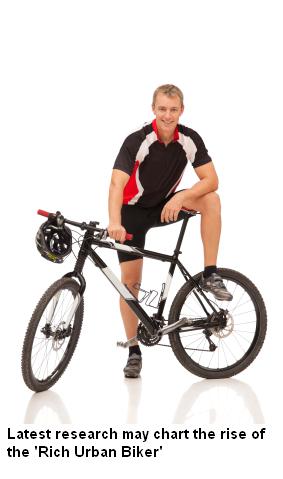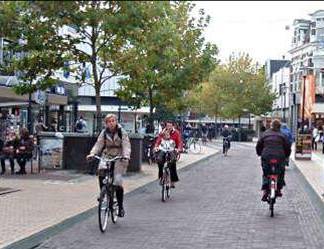 Major research by the government into the way we travel has dispelled the popular myth that cycling is a mode of transport used in the main by those unable to afford a car; the National Travel Survey, which analysed personal travel made in Great Britain during 2009, showed that in households in the top fifth of income brackets, 77 miles were cycled per person. In the lowest two such quintiles, only 32 miles were cycled per household member.
Major research by the government into the way we travel has dispelled the popular myth that cycling is a mode of transport used in the main by those unable to afford a car; the National Travel Survey, which analysed personal travel made in Great Britain during 2009, showed that in households in the top fifth of income brackets, 77 miles were cycled per person. In the lowest two such quintiles, only 32 miles were cycled per household member.
It is likely that the disparity in cycling between socio economic groups is explained by the increase in leisure cycling and commuting by bike amongst those in the highest income brackets.
The increasing popularity of bicycles that cost over £500 is borne out by cycle insurance providers, who are being asked to provide cover for increasingly expensive bikes.
A spokesperson for the Environmental Transport Association (ETA) said: “Despite increases in the distance travelled by bike, only two per cent of trips of less than five miles are undertaken by bicycle and many fewer trips by bike are now being made by teenagers. We need to make long-term planning decisions now in order to address these problems in the future.”
The average distance travelled per person by bicycle in 2009 was 46 miles, compared with 42 miles the previous year. The distance of the average cycle trip was 2.8 miles – a 17 per cent increase compared to 2002.
“Denmark: Probably the best cycling in the world”
The first thing I noticed arriving in Denmark, although I had been warned, was that the Danes love their flag – it’s everywhere. Village after village was festooned with flags. Every house seems to have a flag pole.
 The second thing was the number of cyclists. People of all ages on sit-up-and-beg bikes pootling about. People tell me that more people cycle in Denmark than here because Denmark is flat – okay Denmark isn’t hilly but nor are most of our urban areas. So that reason doesn’t hold. It’s the weather then – no wrong again – Danes cycle in the snow at -10°C. I think the reason is because Denmark is more socially equal than Britain so you do not have to wear Lycra to ride a bike. Cycling is regarded as just another mode of transport so it needs to be catered for just like any other. Consequently, the streets in Denmark tend to be designed for cyclists. No surprise that people cycle. It’s the layout and traffic rules that make the difference.
The second thing was the number of cyclists. People of all ages on sit-up-and-beg bikes pootling about. People tell me that more people cycle in Denmark than here because Denmark is flat – okay Denmark isn’t hilly but nor are most of our urban areas. So that reason doesn’t hold. It’s the weather then – no wrong again – Danes cycle in the snow at -10°C. I think the reason is because Denmark is more socially equal than Britain so you do not have to wear Lycra to ride a bike. Cycling is regarded as just another mode of transport so it needs to be catered for just like any other. Consequently, the streets in Denmark tend to be designed for cyclists. No surprise that people cycle. It’s the layout and traffic rules that make the difference.
I noticed this starkly when crossing the border from Belgium to France – many cyclists in Belgium but few in France.
The weather does not recognise boundaries and the terrain was the same. The only difference was the street layout. In Belgium the cyclist is catered for to a far greater extent than in France.
So that is what we need to do here. As cycling is even more efficient and green than walking, street layout should begin with the cycle, then add walking, then add motorised traffic. Such an aspiration is so far removed from current experience we should begin with the inner parts of our towns and cities – the area within 800m of the town centre.
Cycle insurance
Cycle insurance from the ETA includes new-for-old, cover for accidental damage, £1m third party insurance, personal accident cover and if you breakdown, we will even come out and recover you and your bike. Get an instant online quote below.

0 Comments View now